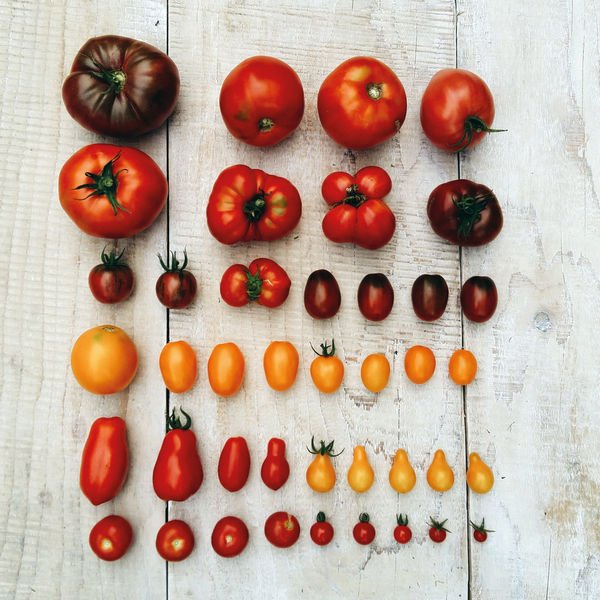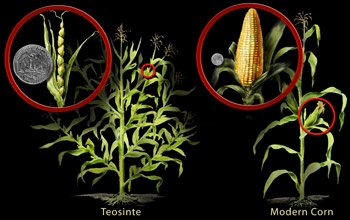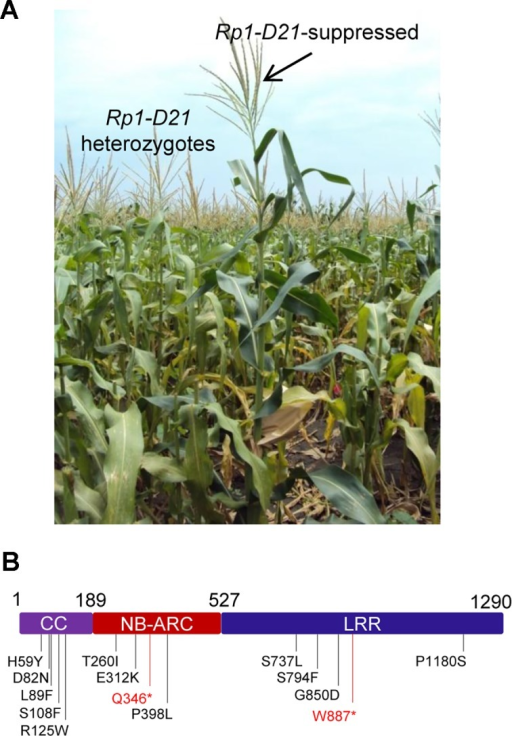Science Misconceptions: Genetically Modified (GM) crops are Harmful to Humans
As part of the Suesa Science Challenge, I will list three reasons why Genetically Modified Crops are safe for consumption. Better yet, I would argue that in some ways, they may be safer than conventionally bred crops. Here are the reasons why:
1. Humans have long engaged in the genetic modification of animals and foods.

Picture of a pug dog breed. Source
That's right; this animal has descended from an ancestor it shared with a (now extinct) species of wolves (Freedman et al., 2014(. Humans have engaged in the selection of dogs with the right "traits" for centuries (when thinking about dogs) and for thousands of years for edible plants. The results, an eclectic mix of mutants (plants that carry random changes in an organisms genetic code that were selected for), each that has a desirable phenotype. Would a poodle survive in nature? (I don't think they would last long). This argument is entertaining to some degree (Personally, I believe that dog breeding is cruel), but in the case of crops, the situation is not much different. Early humans started saving the seeds of plants that had improved traits (selection of mutants with better yields, tastier fruits, resistance to pathogens, etc.) early in their existence, driving the emergence of mutant crops we now consider to be normal and healthy foods. I present to you two examples below.

Figure 2. A collection of fruits from wild tomato species. Some have great agronomical traits; many are not fit for human consumption. Source

Figure 3. Teosinte, the Ancestor of modern maize. Selection of spontaneous mutations (and selection) in ~1,200 genes from the ancestor grass Teosinte gave rise to modern maize (Wright et al., 2005). Source. Credit: Nicolle Rager Fuller, National Science Foundation
2. Conventional breeding approaches are blind-genetic modification experiments
Say you have two plants, a crop cultivar, and its wild ancestor and you wish to introduce new traits from the ancestor into the cultivar. The genetic approach is to cross and to select for your favorite trait (say resistance to a pathogen). While your trait is specified by 1 or maybe even five genes, the actual cross results in the introduction of thousands of new gene versions. Any harmful genes? Breeders can't know (they only look at the good traits), but luckily, we have not attributed detrimental effects to these breeding methods.
3. If genetic transformation puts you off, you will find modern breeding approaches downright scary.
Okay, crossing wild species with crops is not always possible. It also introduces many traits that are not desirable. If you have crop species with little genetic variation, how can we improve crops? Wait 1,000 years for spontaneous mutations? Nope, we can always INDUCE mutations and create diversity in that way. Amongst the modern breeding methods, researchers can apply mutagens (compounds that cause mutations) to crops to drastically increase mutation rates and then select mutants that have improved traits. For example, see (Wang et al., 2015).
The problem? Mutagens are aspecific, causing random mutations across the genome. This means that in addition to mutations present in your trait-associated gene, the genome is littered with other mutations that affect plant properties. Again, this methodology is considered safe, useful and powerful. I would argue, however, that it is a crude GM technology.

Figure 4. screening of an EMS-derived maize mutant population identifies lines with improved traits (from Wang et al., 2015). Source
So why are GM Crops safer? In fact, and from a health and safety point of view, I don't think that GM crops are healthier than their conventionally bred counterparts. Importantly though, humans can modify crops with GM technology and make them more toxic, harmful or evil. The point is that GM allows precise and controlled modification of plants. What you see is what you get. It, therefore, enables us to determine whether a particular intervention is safe. It also empowers society to decide whether deploying a GM crop is a risk and whether its benefit warrants adoption of each given innovation. Our ability to know and speculate on the consequences of a given modification contrasts with the choices we face when adopting a new crop variety, developed with conventional methods. The intent is clear, but the collateral effect remains unknown initially.
Because of these reasons, I believe that GM technologies can help ensure the improvement of crop production in a sustainable manner.
REFERENCES
Freedman, A. H., Gronau, I., Schweizer, R. M., Ortega-Del Vecchyo, D., Han, E., Silva, P. M., ... & Beale, H. (2014). Genome sequencing highlights the dynamic early history of dogs. PLoS genetics, 10(1), e1004016.
Gruber, K. (2017). Agrobiodiversity: The living library. Nature, 544(7651), S8-S10.
Wang, G. F., Ji, J., Farid, E. K., Dangl, J. L., Johal, G., & Balint-Kurti, P. J. (2015). Molecular and functional analyses of a maize autoactive NB-LRR protein identify precise structural requirements for activity. PLoS pathogens, 11(2), e1004674.
Wright, S. I., Bi, I. V., Schroeder, S. G., Yamasaki, M., Doebley, J. F., McMullen, M. D., & Gaut, B. S. (2005). The effects of artificial selection on the maize genome. Science, 308(5726), 1310-1314.
I hope you will find this piece interesting. Your vote and follow help me open up the exciting world of science to you.
Thank you @foundation for this fantastic SteemSTEM gif

Hello @huitemae,
I am glad to find another plant pathologist here on Steemit!
Especially mentioning the modern used breeding methods acts often as an eye-opener, as people actually just do not know how crude the used breeding methods are. A nice paper for eye-opening is furthermore:
"The genome of cultivated sweet potato contains Agrobacterium T-DNAs with expressed genes: An example of a naturally transgenic food crop"
by Kyndt et al. ;published in PNAS 2015. We have been eating GMO sweet potato for about 8000 years, and are still going strong... ;)
I followed you and are really looking forward to more of your posts!
P.s.: By the way: do you know exact copyright-regulations on paper figures? I was wondering if including them in a blog is problematic. I would be grateful for insight!
Dysprosium
Thank you for your nice words. I had considered adding the Agro paper but felt I would have to explain first what it is etc. As for your question, I consider these images to be suitable for my posts as they are not used commercially. I also try to source them from open access sources. Hope this helps
It does. The paywall alone is outrageous, and then there are copyright issues. Frustrating!
Furthermore I noticed when I looked through your blog that we share a great deal of interests, from beer to pathogens. As I said, I am looking forward to your future posts!
Thank you so much for this. I, NOT being a scientist specifically, started doing research on this when approached by a (very pushy) person wanting me to sign some petition. Instead of blindly being convinced by this person's belief system I declined and started my own investigation.
Turned out, in my findings, GMOs aren't so bad, just as you've said. Of course, everything can be turned nefarious (it's what we deal with), but something that has been GM in general, ISN'T 'bad' for us.
I love that this sites a few examples and is concise without being confusing. This is the perfect piece to present to someone (who is willing to listen and learn).
I LOVE science (particularly the food side of things).
I'm glad you showed up in HOT SCIENCE so I could find you. 😍
Thank you for your kind words. I hope you will continue to enjoy the science on Steemit!
We found many information this post.
Congratulations @huitemae! You have completed some achievement on Steemit and have been rewarded with new badge(s) :
Click on any badge to view your own Board of Honor on SteemitBoard.
For more information about SteemitBoard, click here
If you no longer want to receive notifications, reply to this comment with the word
STOPCongratulations @huitemae, this post is the second most rewarded post (based on pending payouts) in the last 12 hours written by a User account holder (accounts that hold between 0.1 and 1.0 Mega Vests). The total number of posts by User account holders during this period was 1000 and the total pending payments to posts in this category was $1459.16. To see the full list of highest paid posts across all accounts categories, click here.
If you do not wish to receive these messages in future, please reply stop to this comment.
Great post! By the way, there is a nice kurzgesagt episode on this topic: